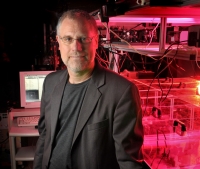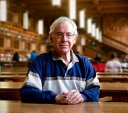High-Harmonic Sources for Material Development and Metrology in the Semiconductor Industry
Hosted By: Short Wavelength Sources and Attosecond/High Field Physics Technical Group
24 March 2021 10:00 - 11:00
Eastern Time (US & Canada) (UTC -05:00)The webinar hosted by the OSA Short Wavelength Sources and Attosecond/High Field Physics Technical Group will showcase a very recent important technological application of attosecond science in the semiconductor industry by featuring a shared presentation between Prof. Henry Kapteyn and Dr. John Petersen.
Partnering with KM Labs and SPECS, imec launched the AttoLab in February 2019 to provide interference lithographic imaging below the 22nm pitch while also providing ultrafast ability to track the radiolysis of resists exposed to EUV using coherent sources produced with high harmonic generation. This part of the AttoLab supports the development of high NA EUV lithography. Beyond resists, with the ability to look at the physics and chemistry of materials from the first 200 attoseconds out to 200 picoseconds after an excitation event, imec will study the solid-state dynamics of 2D and topological materials needed for the sub-3 nm technology node. In this effort, we develop and use characterization spectral and imaging methods that may one day become temporal-spatial metrology. This capability helps imec to bridge the scientific and technical gap between today and the quantum age in the areas of materials, imaging metrology, and lithography.
Subject Matter Level:
- Intermediate - Assumes basic knowledge of the topic
What You Will Learn:
- Ultrafast lasers and pump-probe spectroscopies use in the AttoLab for photoresist characterization: a holistic approach.
- Material characterization and imaging techniques that use HHG with examination for their potential use with next generation metrologies needed for producing sub-2 nm technology node integrated circuits.
- Challenges of high numerical aperture EUV lithography and ways to probe and mitigate using ultrafast pump-probe spectroscopies and ab initio molecular dynamics studies.
Who Should Attend:
- Photochemists
- Ultrafast kineticists
- HHG researchers
- Electron, IR spectroscopists
- Lithographers
About the Presenters:
 Henry Kapteyn, JILA, University of Colorado at Boulder and NIST
Henry Kapteyn, JILA, University of Colorado at Boulder and NIST
Dr. Henry C. Kapteyn is a Professor at the Department of Physics and a Fellow of JILA, at the University of Colorado. He is most known for the development of x-ray and short-wavelength lasers as well as for a new generation of lasers which make it straightforward to produce light pulse of less than ten femtoseconds duration. Prof. Kapteyn received numerous awards, including OSA Adolf Lomb’s medal (1993) and APS Ahmed Zewail Award in Ultrafast Science and Technology (2009). He is a fellow of OSA, APS, AAAS and the American Academy for Arts and Sciences.
 John Petersen and Paul van der Heide, IMEC
John Petersen and Paul van der Heide, IMEC
John Petersen and Paul van der Heide are co-leaders of the AttoLab, a new ultrafast chemistry and physics laboratory at imec, Belgium; and, John is an adjunct professor of physical chemistry at the University of Maryland. At imec, he studies the ultrafast ionization and radiolysis processes of EUV resists and is exploring the use of HHG for future metrologies for the quantum age. John is a SPIE Fellow and a former Fellow at SEMATECH. For forty years, John has explored the interaction of the physics of lithographic systems with the chemistry of the imaging materials and their interfaces.
